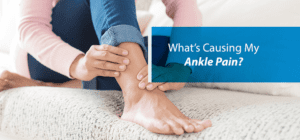
Say Goodbye to Cervical Radiculopathy
Are you bothered by neck pain that radiates down your arm? Do certain neck movements make your pain worse? Or, maybe you’re worried about that “pins and needles” sensation in your shoulder, arm, or hand? If so, then you may be dealing with cervical radiculopathy. This neurological condition can be caused by changes in the spine resulting from aging, injury, or damaged discs. You’re probably wondering what can be done for cervical radiculopathy. Is surgery necessary? Can conservative treatments actually help? There’s plenty of good news. Cervical radiculopathy treatment may not require surgery. Allowing your body time to heal and using proven, conservative treatments may be all you need. This, of course, depends on the underlying cause of your neck pain and the severity of your symptoms. NJ Spine and Ortho is here to help you take a closer look at why you may be experiencing these symptoms. Causes of Cervical Radiculopathy Your brain is the hub of your central nervous system. It relays messages throughout your body with the help of the spinal cord and a network of nerves. Consider your neck (i.e. the cervical spine) to be the bridge between your brain and the rest of your body. A column of seven vertebrae originates at the base of the skull and connects to the thoracic spine (or upper back) area. Your cervical spine serves to protect the spinal cord and also supports the head. In addition, nerve roots branch out from these vertebrae through openings known as foramina. Between each of these vertebrae, flexible discs reside, absorbing the shock of our everyday movements. How do all of these complex structures contribute to your radiculopathy pain? The short answer is: it depends. Cervical radiculopathy is caused by a compressed or irritated nerve. Sometimes, considered a “pinched” nerve, this compression usually occurs where a nerve root branches out from the spinal column. Structural changes affecting the spine can injure a nerve and cause radiating pain as well as other issues. Common causes of structural nerve compression include: Degenerative changes in the spine: As we age, the spine changes because of wear and tear, personal habits, and disease. Sometimes, the discs protecting the spine can lose their shape and structure. Also, osteoarthritis can cause bone spurs to grow in or around the foramina. Foraminal stenosis is a blanket term for changes in the cervical spine that involve narrowing of the foramina. It is the most common cause of cervical radiculopathy. Herniated disc: Sometimes, the inner layer of a disc can rupture and push through its tough outer layer. It can be due to repeated, strenuous activity, a car accident, or other trauma. The damaged disc can then press against a nerve causing radiculopathy. Less common causes: Fractures to the spine—such as spondylolisthesis—tumors, or infections may also injure the nerves exiting the spinal cord. Cervical Radiculopathy Symptoms Neck pain can result from a variety of factors. Cervical radiculopathy, however, has some tell-tale symptoms. These often depend on the particular nerve root which

